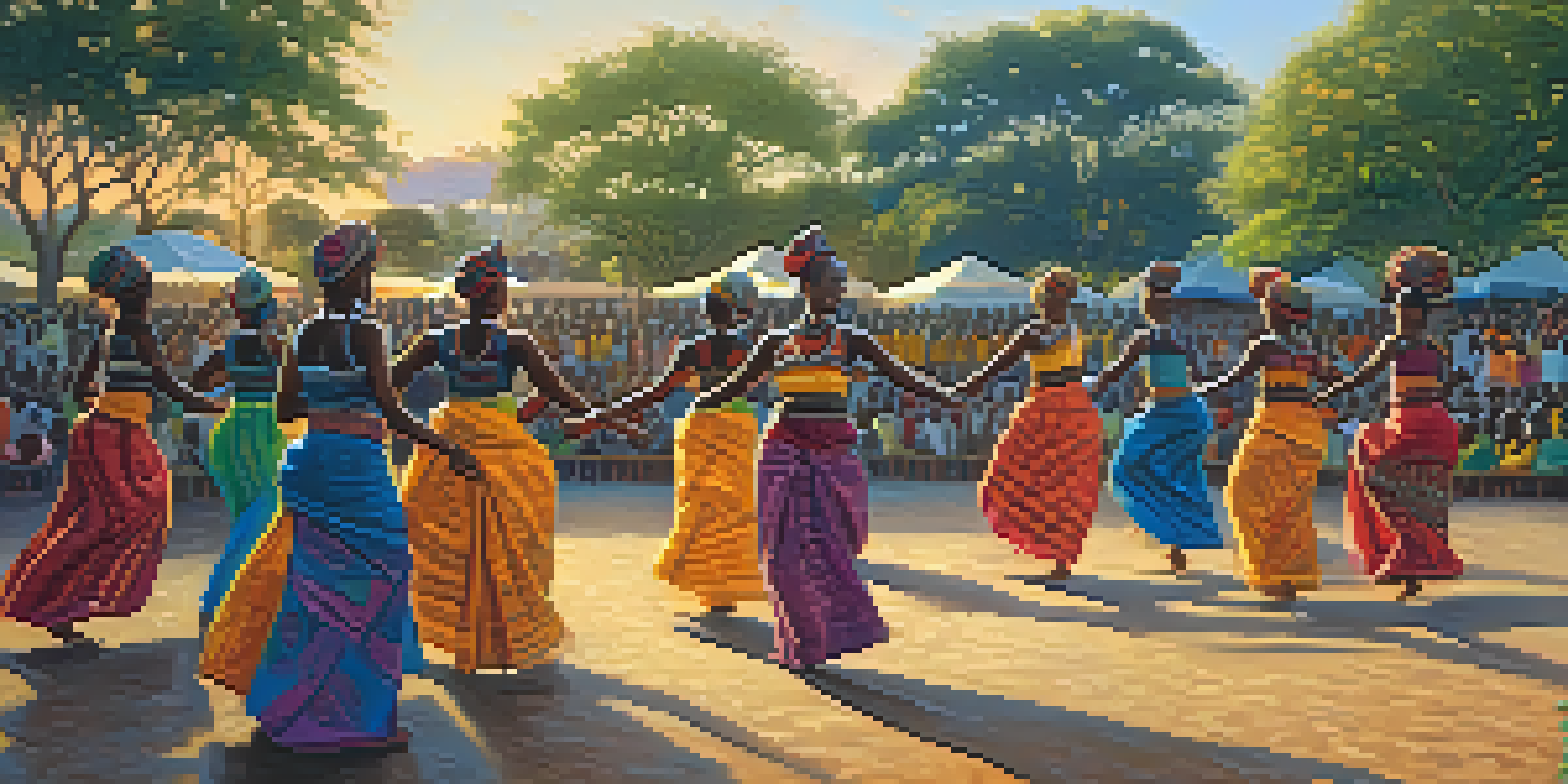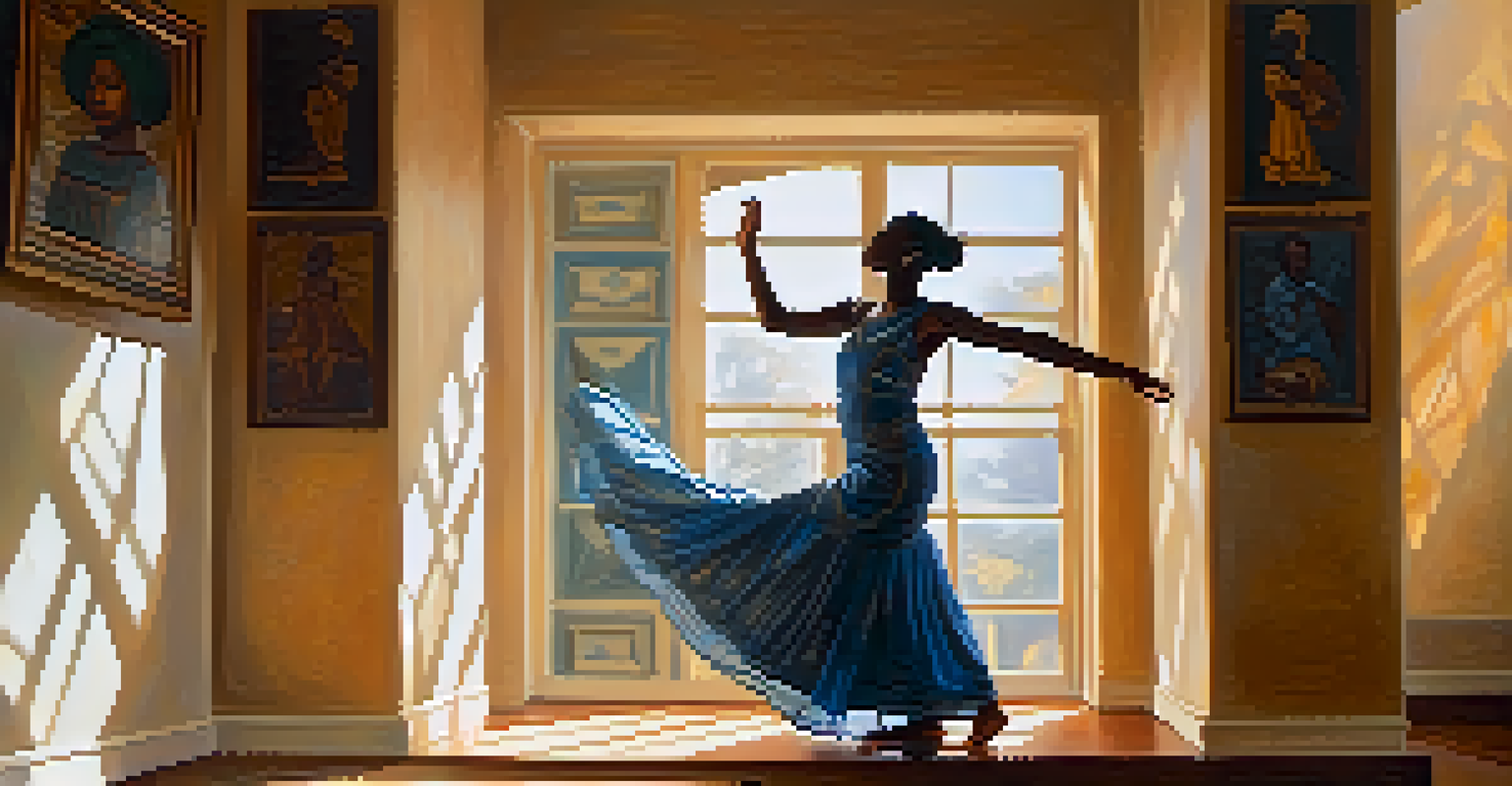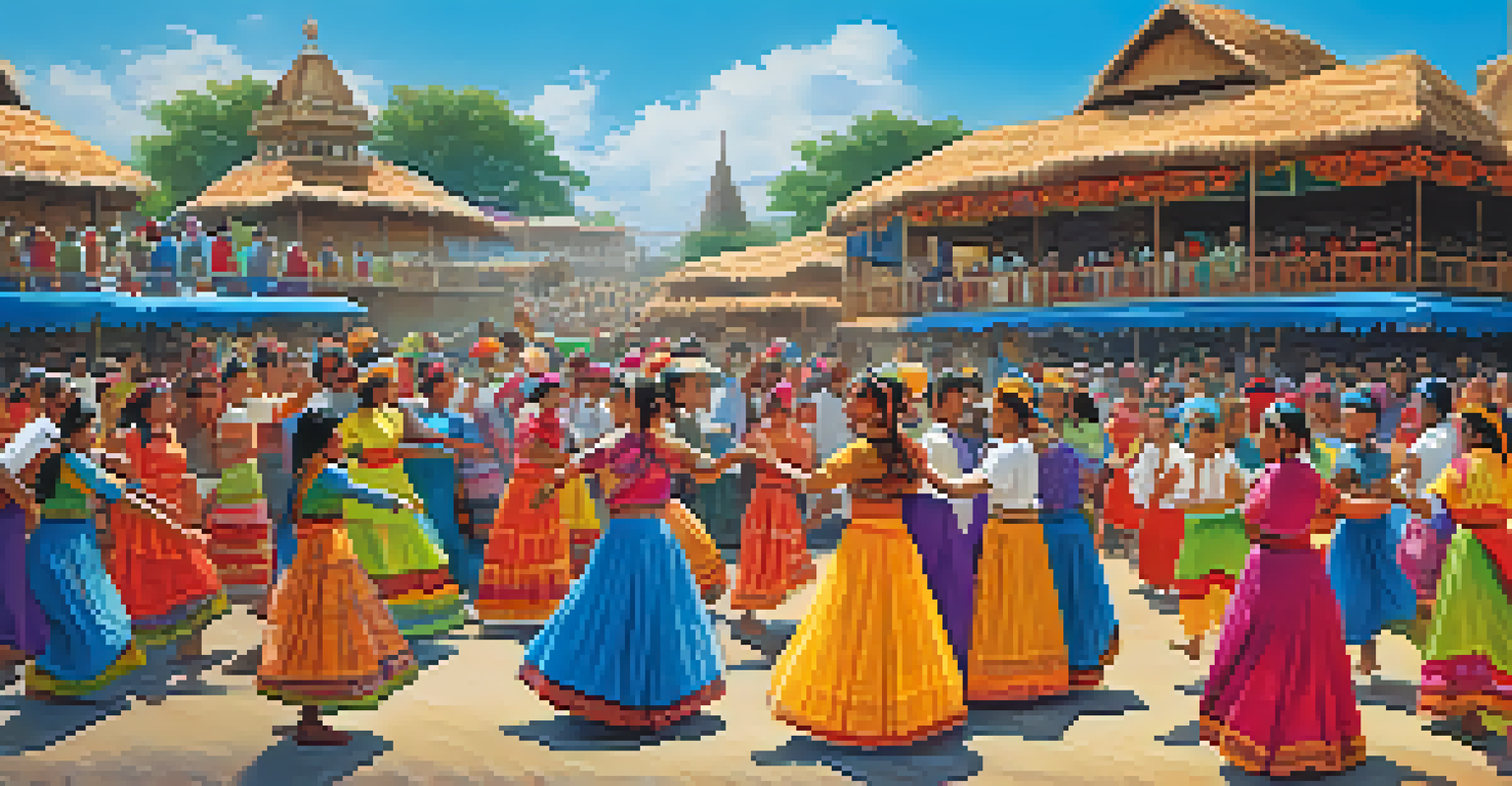Cultural Significance of Dance in African Literature

Dance as a Reflection of African Identity and Heritage
In African literature, dance serves as a powerful reflection of cultural identity. It encapsulates the values, beliefs, and traditions that define various communities across the continent. Through narratives, authors often weave dance into their stories, highlighting its role in ceremonies and communal gatherings.
Dance is the hidden language of the soul.
For instance, in many African societies, dance is not merely an art form but a means of storytelling, conveying historical events and ancestral legacies. Authors like Chinua Achebe incorporate these elements to showcase how dance connects individuals to their roots. This connection fosters a sense of belonging and continuity among generations.
Moreover, the vibrant descriptions of dance in literature allow readers to experience the rhythm and movement of the cultures being depicted. This immersive experience enriches the narrative, making it a crucial aspect of understanding African life and its complexities.
Symbolism of Dance in African Folklore and Mythology
Dance in African literature often carries deep symbolic meanings, particularly in folklore and mythology. It serves as a bridge between the spiritual and physical worlds, representing the connection between humans and their deities. Myths frequently depict dances as rituals that invoke blessings, protection, or guidance from ancestors.

For example, in the stories of the Yoruba people, dance is often featured in rituals to honor the Orishas, the deities that govern various aspects of life. These narratives illustrate how dance functions as both a religious and cultural expression, highlighting its importance in communal identity.
Dance Reflects African Identity
In African literature, dance embodies cultural identity, values, and traditions, connecting individuals to their communities.
Through the use of dance symbolism, authors can explore themes of transformation and renewal. As characters engage in dance, they often experience personal growth or a deeper understanding of their place in the world, making it a pivotal element in many African literary works.
The Role of Dance in Community and Social Cohesion
Another significant aspect of dance in African literature is its role in fostering community and social cohesion. Dance gatherings often serve as communal events where individuals come together to celebrate, mourn, or mark important milestones. This sense of unity is frequently depicted in literary works, emphasizing the importance of collective experiences.
The dance is a poem of which each movement is a word.
Authors like Zadie Smith have illustrated how communal dances can strengthen bonds among characters, creating a sense of togetherness that transcends individual struggles. This portrayal not only highlights the joy of shared experiences but also the support systems that dance fosters within communities.
Additionally, these communal aspects of dance help to break down social barriers, allowing individuals from various backgrounds to connect. In literature, this theme resonates deeply, as characters navigate their relationships through the lens of dance, ultimately revealing the profound impact of shared cultural practices.
Dance as a Means of Resistance and Empowerment
In various African literary works, dance emerges as a powerful tool for resistance and empowerment. During colonial times, dance became a form of protest against oppression, enabling communities to reclaim their identities and assert their cultural heritage. Writers often highlight these moments of defiance to showcase the resilience of African people.
For instance, in works by authors like Ngũgĩ wa Thiong'o, dance is portrayed as an act of rebellion, where characters use movement to express their dissatisfaction with social injustices. This transformative aspect of dance underscores its ability to empower individuals and communities in the face of adversity.
Dance as Community and Empowerment
Dance fosters social cohesion and serves as a tool for resistance and empowerment, highlighting its role in collective experiences.
Furthermore, dance is depicted as a means of personal liberation, allowing characters to break free from societal constraints. Through these narratives, readers witness how dance not only serves as a form of expression but also as a catalyst for change, inspiring characters to challenge the status quo.
Interplay of Dance and Language in African Literature
The interplay of dance and language is a fascinating aspect of African literature. Dance often complements storytelling, enhancing the narrative through rhythm and movement. Authors skillfully intertwine descriptions of dance with dialogue and prose, creating a rich tapestry that captivates readers.
For instance, the use of onomatopoeic words in describing dance movements can evoke the sounds and feelings associated with these cultural practices. This linguistic creativity not only enriches the text but also serves to preserve the intricacies of African dance traditions.
Moreover, the incorporation of indigenous languages in dance descriptions allows for a deeper cultural understanding. Readers are invited to engage with the text on multiple levels, experiencing the nuances of both language and movement that are central to African storytelling.
Dance in Contemporary African Literature
Contemporary African literature continues to explore the significance of dance, reflecting modern societal changes while honoring traditional practices. Authors today often blend traditional dance forms with contemporary themes, showcasing the evolution of cultural expressions in a globalized world. This fusion creates a dynamic narrative that resonates with diverse audiences.
For example, writers like Chimamanda Ngozi Adichie incorporate dance into their narratives to address issues of identity, gender, and social change. These portrayals reveal how dance remains a vital form of expression that evolves while retaining its cultural roots.
Dance in Modern African Narrative
Contemporary African literature showcases the evolution of dance, blending traditional practices with modern themes to address identity and social change.
Additionally, contemporary literature often highlights the role of dance in social movements, illustrating how it serves as a rallying point for activism. This relevance in modern contexts keeps the tradition alive, ensuring that dance remains an integral part of African storytelling.
Conclusion: Embracing the Cultural Legacy of Dance
In conclusion, the cultural significance of dance in African literature is profound and multifaceted. It reflects identity, serves as a means of resistance, and fosters community, among many other roles. Through the lens of dance, readers gain insight into the rich tapestry of African cultures and their enduring legacies.
As we explore these literary works, it's essential to recognize the power of dance as a narrative device. It not only enhances storytelling but also connects us to the heart of African traditions, allowing us to appreciate the rhythm of life that dance embodies.

Ultimately, the celebration of dance in African literature invites us to embrace cultural diversity and understand the universal themes of joy, struggle, and resilience that resonate with all of humanity.